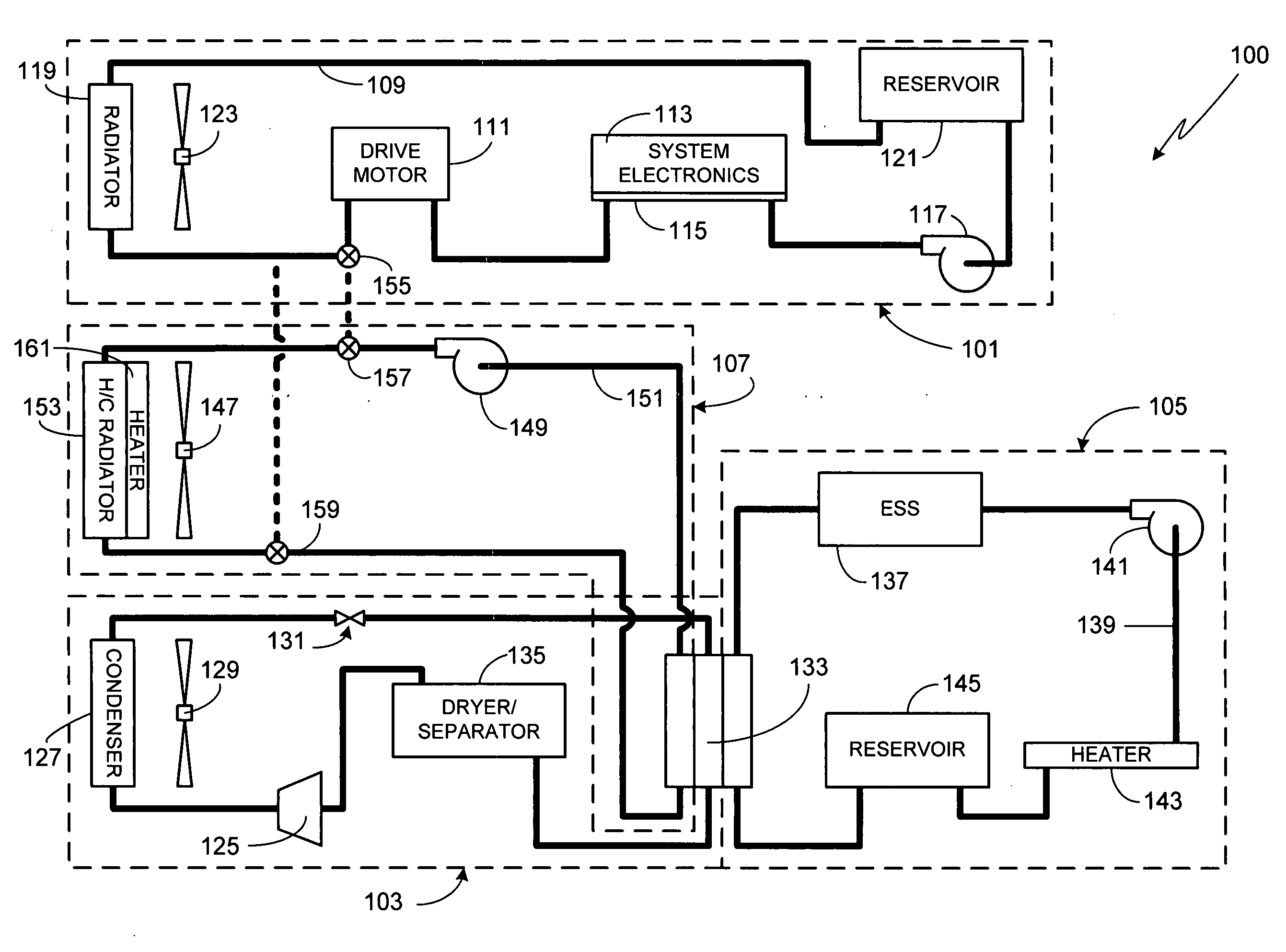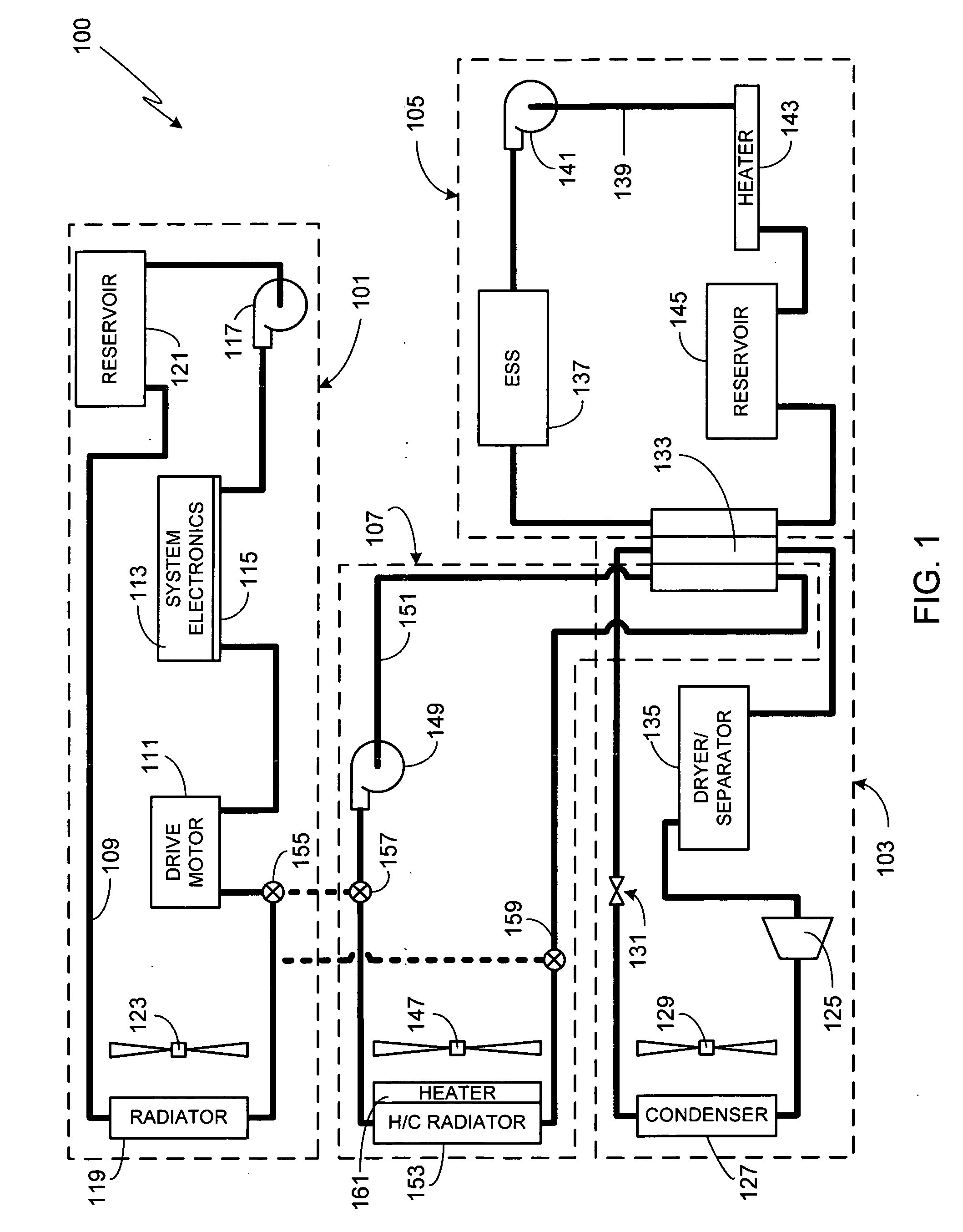Electric vehicle thermal management system
a technology for thermal management systems and electric vehicles, applied in ventilation systems, lighting and heating apparatuses, heating types, etc., can solve problems such as and inability to meet the needs of electric vehicles
- Summary
- Abstract
- Description
- Claims
- Application Information
AI Technical Summary
Benefits of technology
Problems solved by technology
Method used
Image
Examples
Embodiment Construction
[0010]FIG. 1 schematically illustrates a thermal management system 100 in accordance with a preferred embodiment of the invention. System 100 is comprised of four subsystems; power train cooling subsystem 101, refrigeration subsystem 103, battery cooling subsystem 105, and heating, ventilation and cooling (HVAC) subsystem 107. Each subsystem will now be described in detail.
[0011]Subsystem 101 is comprised of a continuous power train cooling loop 109 which is used to cool drive motor 111, the vehicle's principal traction motor. Preferably cooling loop 109 is also used to cool various system electronic components 113 (e.g., the power electronics module for motor 109). System electronics 113 are preferably mounted to a cold plate 115 which is used to transfer the heat away from the electronics and into the liquid coolant (i.e., the heat transfer medium) contained in the cooling loop. Cooling loop 109 also includes a pump 117 to circulate the coolant through the cooling loop, a radiator...
PUM
 Login to View More
Login to View More Abstract
Description
Claims
Application Information
 Login to View More
Login to View More - R&D
- Intellectual Property
- Life Sciences
- Materials
- Tech Scout
- Unparalleled Data Quality
- Higher Quality Content
- 60% Fewer Hallucinations
Browse by: Latest US Patents, China's latest patents, Technical Efficacy Thesaurus, Application Domain, Technology Topic, Popular Technical Reports.
© 2025 PatSnap. All rights reserved.Legal|Privacy policy|Modern Slavery Act Transparency Statement|Sitemap|About US| Contact US: help@patsnap.com


